
Let the Cameras Roll! Evoke Emotions and Create Moods through 3D Renderings
Creating a photorealistic interior rendering is an art that requires expertise and experience. 3D artists are creative alchemists who are able to create moods and elicit emotions by playing around with the lighting and contextual details. Two images of the same room, created using the same camera angle and furnishings, can evoke vastly different moods depending on the time of day, the lighting, the weather outside the window and secondary detailing in the frame. To get the effect that you desire, it’s important to let your designer know all these details when you are requesting 3D visuals for your presentation.
3D renderings have the capability of conjuring up powerful feelings in many different ways. They can depict cheer and comfort, showcase elegance and opulence or evoke calmness and serenity. Whatever may be the outlook that you wish your clients to have about your project, the 3D artist can help you create the atmosphere and ambience that will instil the mood you seek.
Let’s take a look at how the same visual can take on different moods based on the settings you choose!
Time of the Day
When starting out with a 3D architectural visualization, the mood of your image is primarily determined by the time of day that is depicted. Here’s how your choice will affect the final outcome.
Sunrise or Sunset
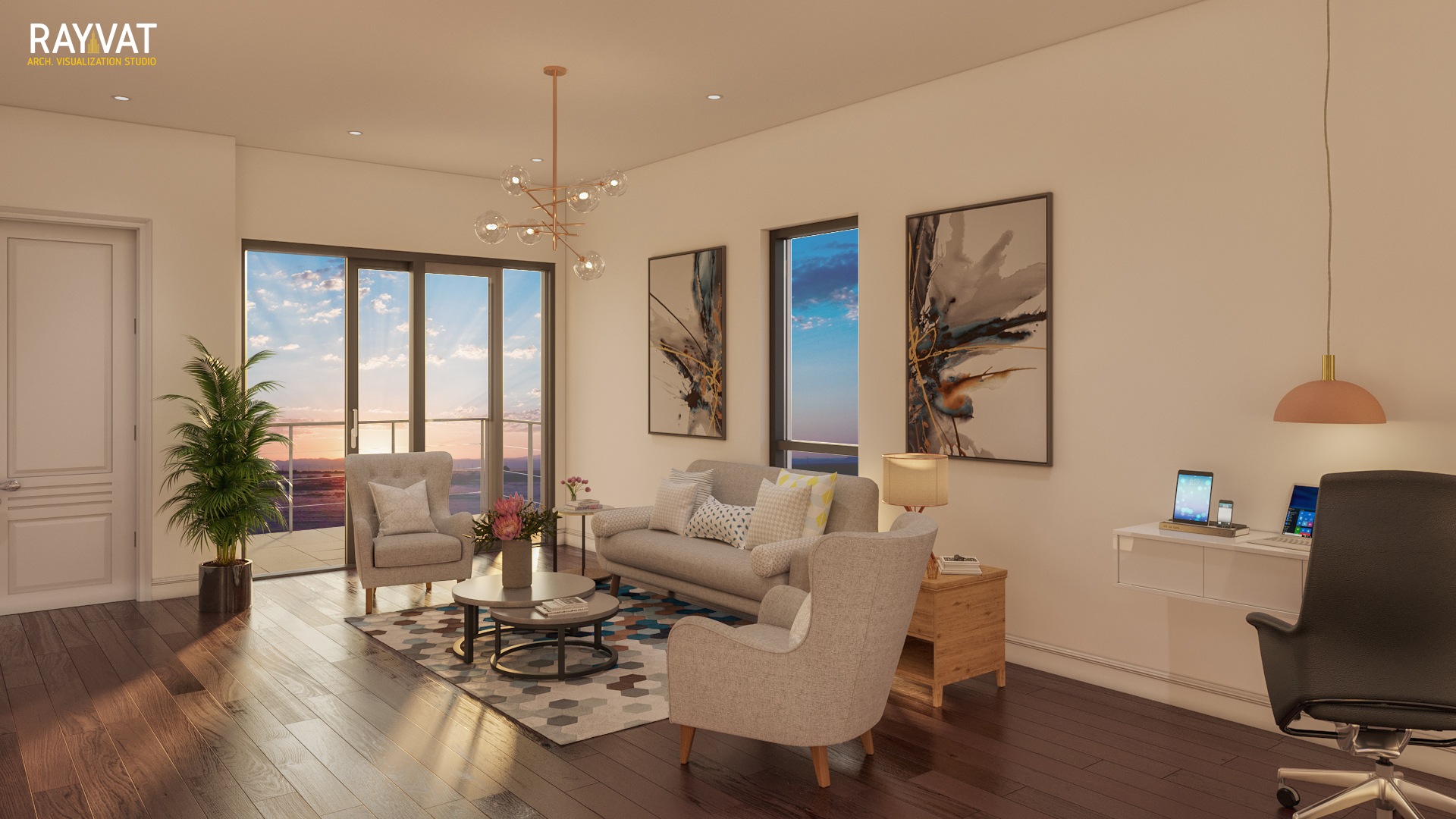
A dawn or dusk setting gives a magical, romantic atmosphere that shows your interior in a soft, warm light. All the colours in the room are toned down, and the slanting rays of the sun create golden highlights on any metallic surfaces. Shadows are longer and objects in the room may not have the detail that some people like to see. It’s a good idea, therefore, to use such visuals only in addition to ones that are set in bright daylight.
Midday
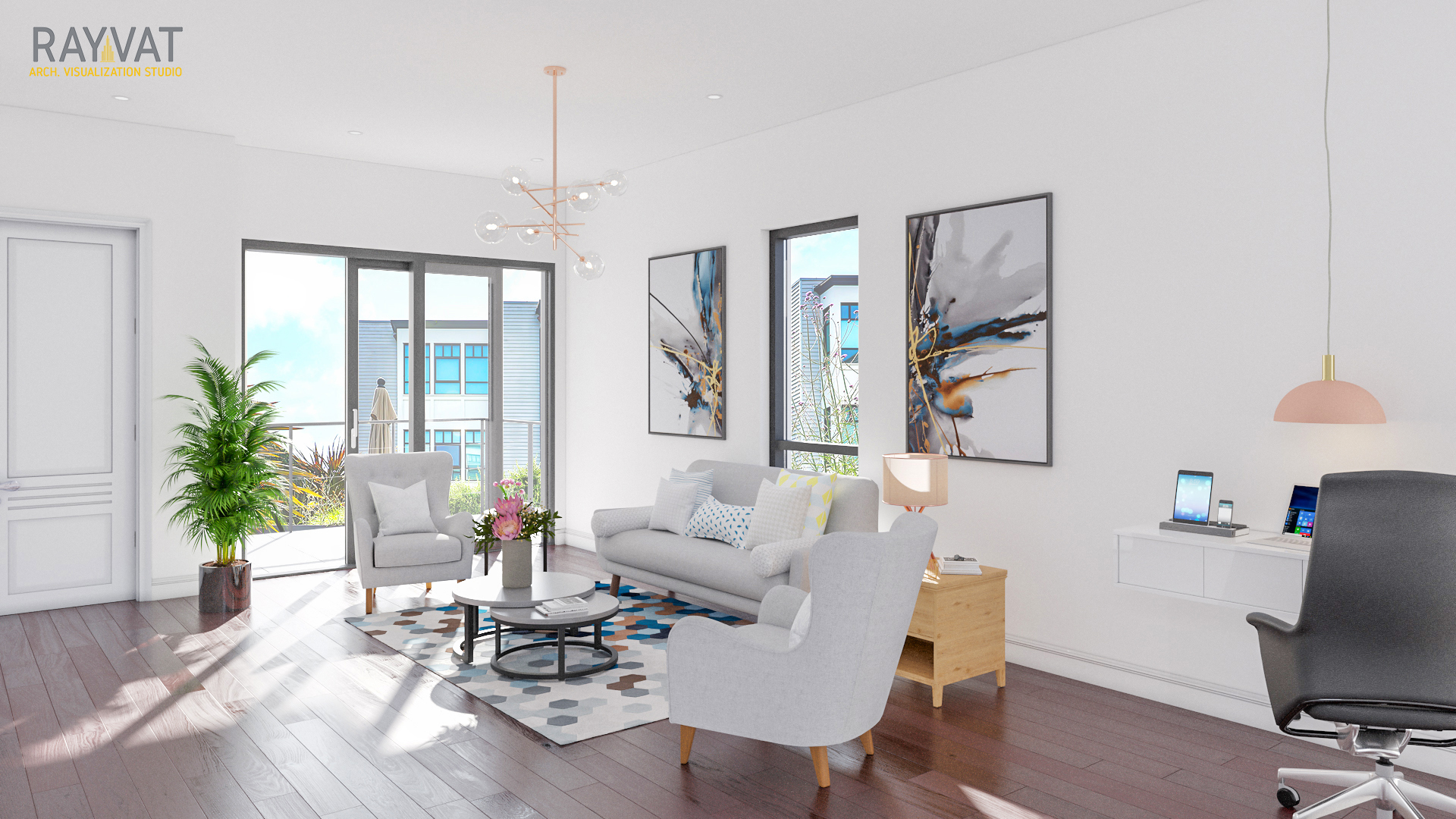
This is the time of day that most 3D artists prefer, as there is adequate daylight for all the elements in the room to be seen with complete clarity. Designers can clearly depict the chosen colour palette and interior detailing, as all the furniture and furnishings can be seen with fine detail. As there is usually enough natural light, all the light fixtures are switched off. Most designers opt to use this time setting for their 3D images.
Night-time
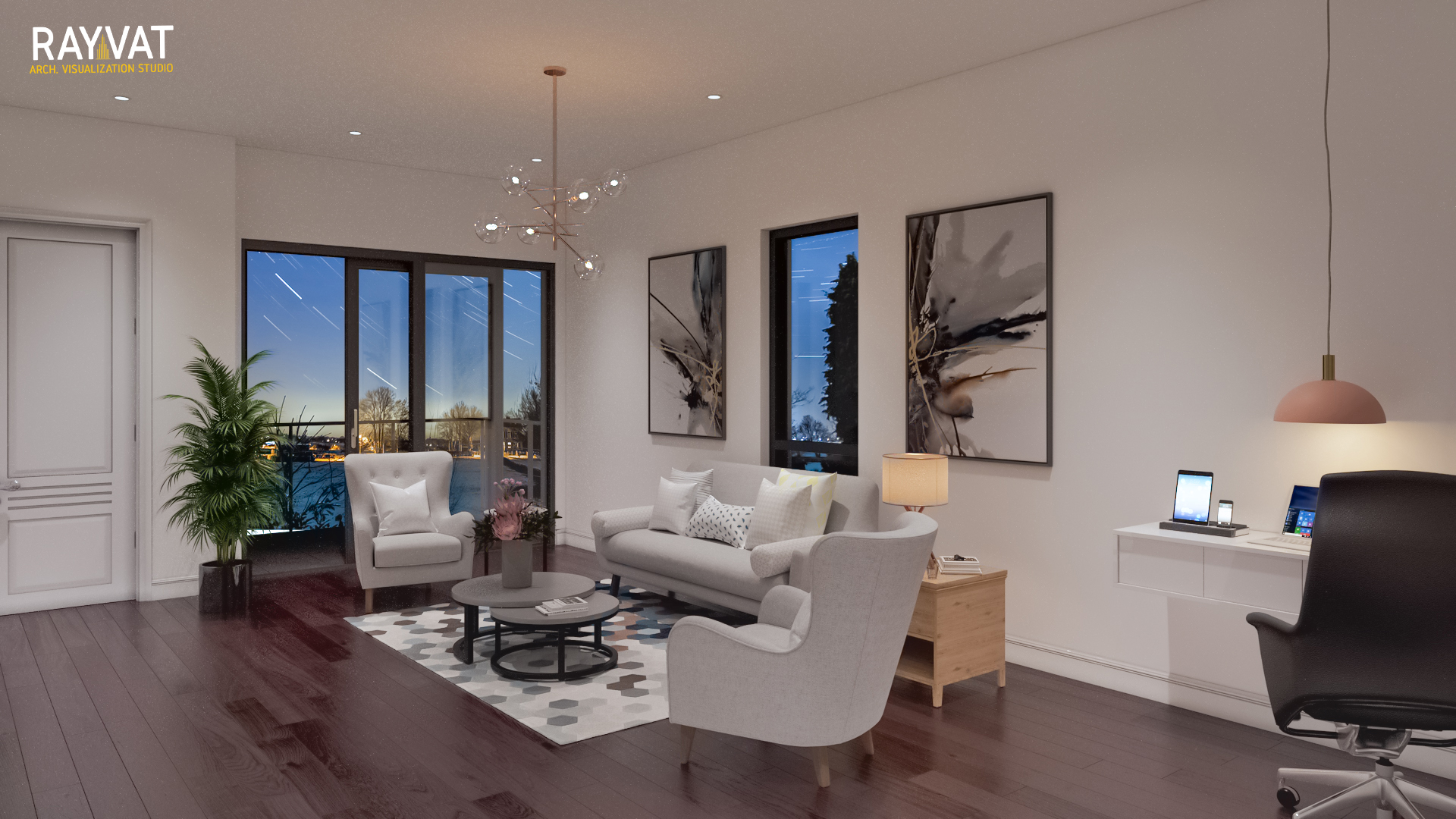
By showing the project in a night-time setting, viewers get a clear idea of how the artificial illumination has been planned for the project. The various levels of lighting can be clearly depicted in the photorealistic interior rendering. Ambient lights in the form of chandeliers, spotlights or ceiling light fixtures take care of the general overall illumination, while task lighting comes in the form of reading lamps or kitchen countertop lights. Accent lighting adds drama to the spaces and throws pools of light or casts shadows through the use of niche lights, wall sconces or track lights.
The night-time render will show the interaction between these three types of light fixtures, indicating how all the layers work together both functionally and aesthetically. Different qualities of artificial light are demonstrated; indicating whether the lighting is warm or cool, white or coloured, and the quality of shadows cast. Garden lights can also show the best visuals of the project. These images help clients to imagine how their home will look in the evenings and during the night.
Daytime Lighting Options
Most architects and builders prefer to have a daytime setting for the photorealistic interior 3D rendering of their projects, and we will look in detail at three possible variations of it. The weather plays an important role in changing the mood of a place, and you can choose the variant that creates the mood you would like for your image.
1. Natural Ambient Lighting: A Cloudy Day
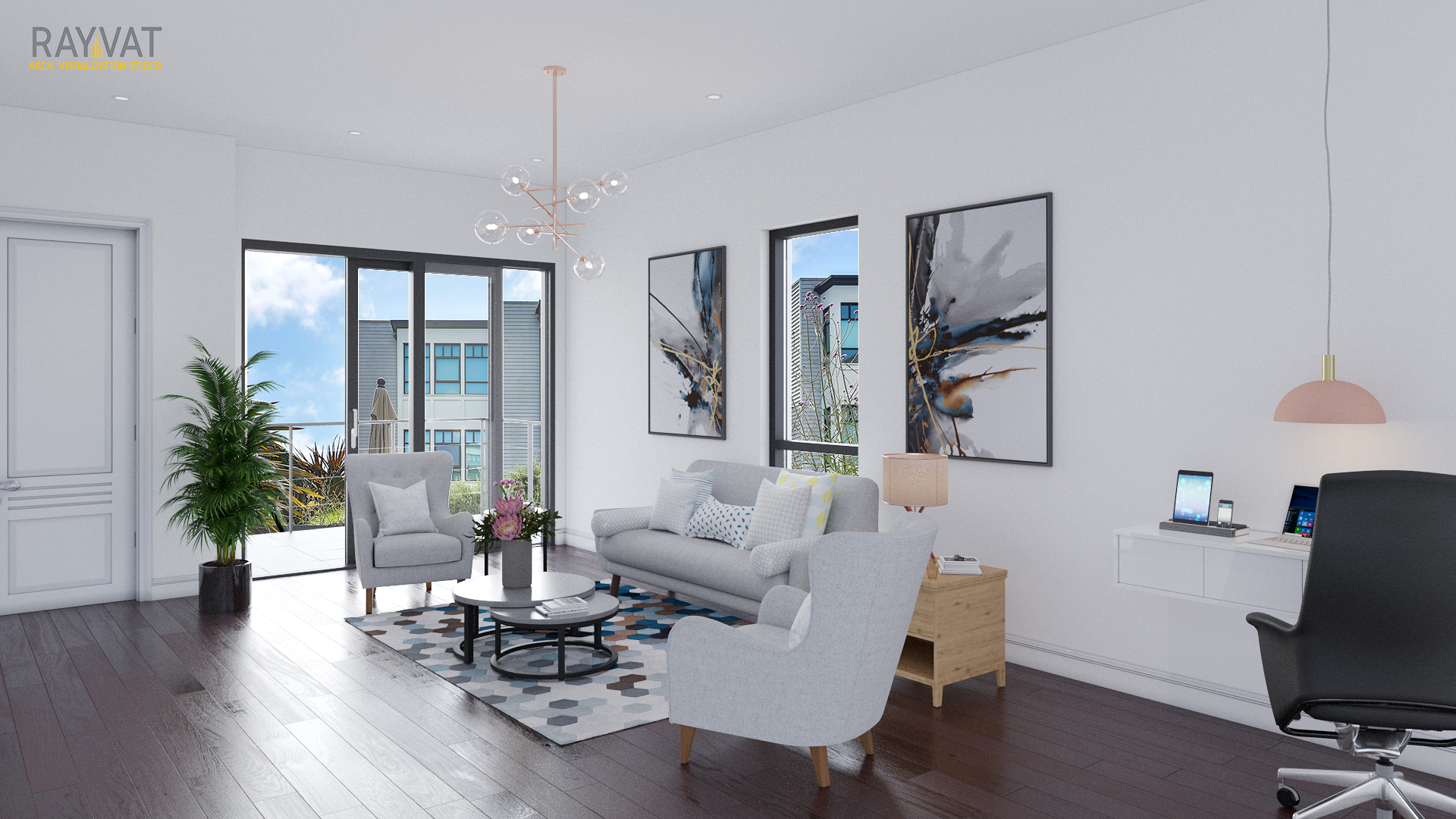
A cloudy, overcast day is the perfect time to curl up on a sofa with a good book and a cup of hot fragrant tea! When it comes to photorealistic interior rendering, by choosing a cloudy background, you will get neutral natural lighting that is perfect for any kind of design project. Colours and textures are depicted with utmost clarity in a natural setting, as could be expected on an overcast day. The mood that is created is relaxed and laidback.
2. Natural Ambient Lighting: A Sunny Day
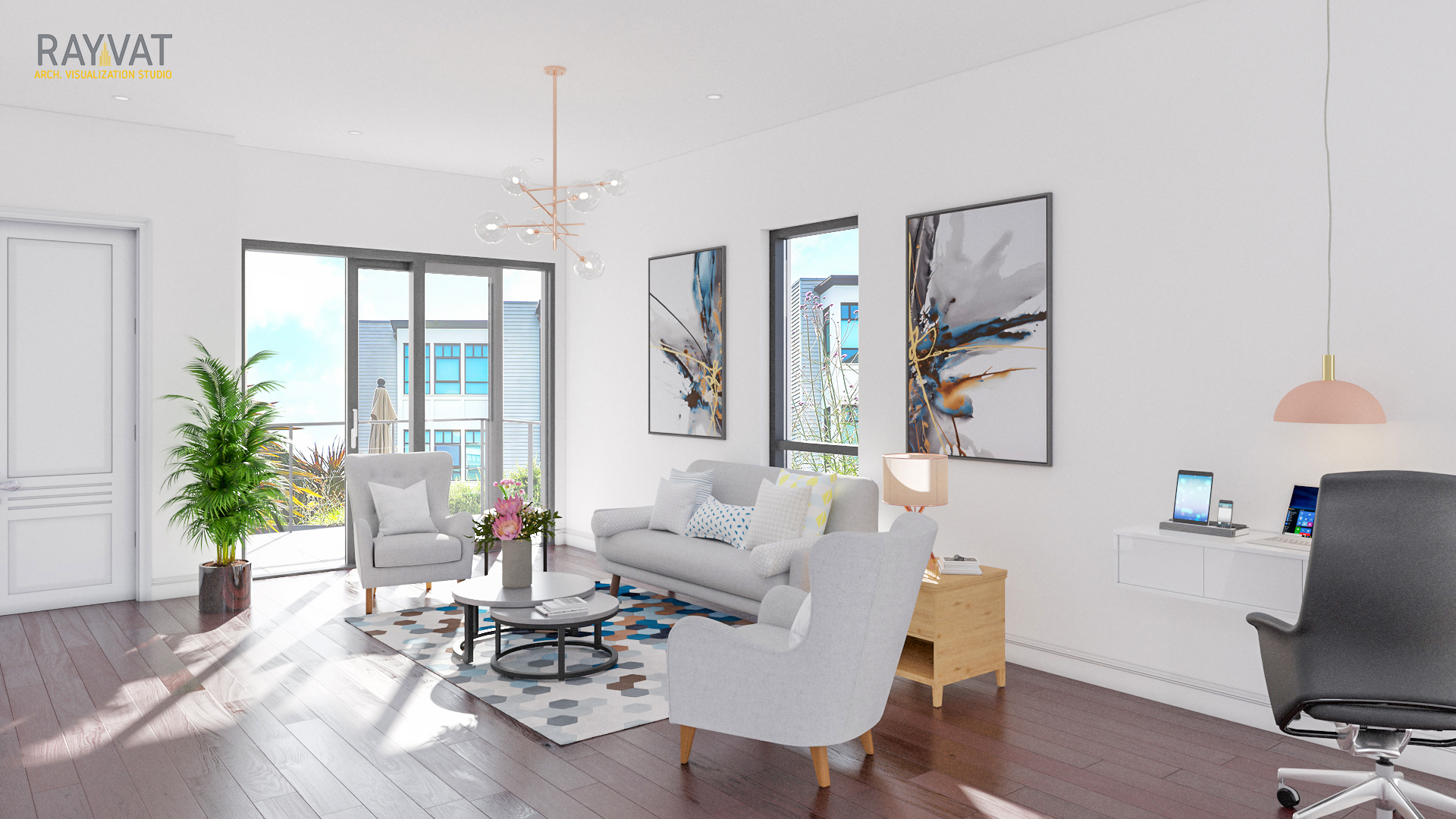
Bright and sunny days are vibrant and energized, and the sun streaming in gives a warm, fresh quality to the interior image. Colours look warm and bright, shadows and highlights are intense, and contrasts are sharp and clearly defined. There is a great attention to detail in 3D renders that are set in bright natural sunlight. Especially if your room has large windows and balconies, the effect you are able to achieve will be very arresting.
3. Ambient Lighting: Natural + Artificial
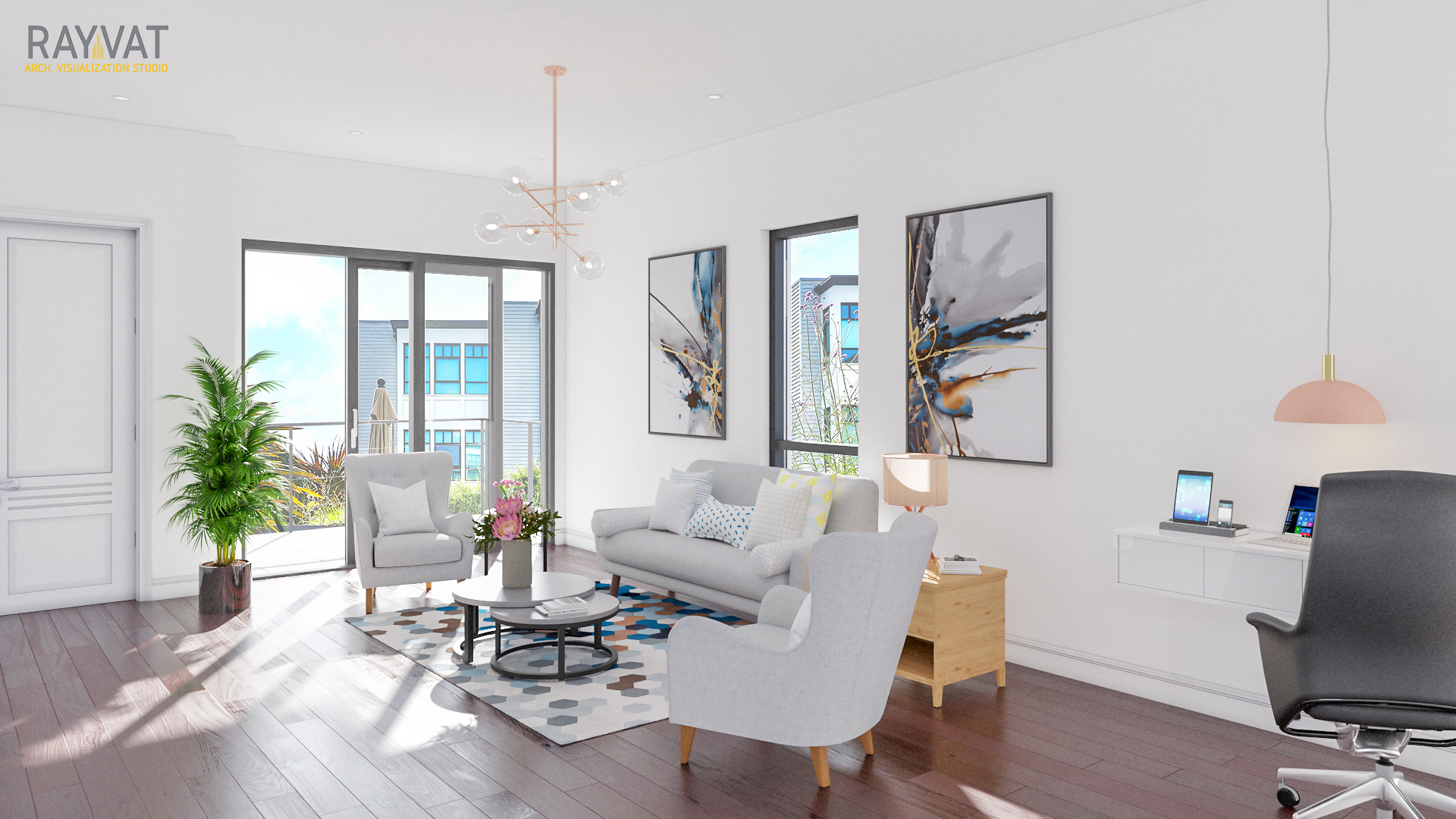
When the designer chooses a combination of natural and artificial light, every aspect of the design can be shown in one single image. While this is a practical way to show all the elements together at the same time, this might end up looking a bit unnatural as in reality no one really switches on lamps when there is bright sunlight. Viewers will also not be able to judge how much light is coming from each source, and the quality of light sources. However, all the furniture, colours and materials can be depicted in clear detail.
Amount of Detail
When it comes to 3D rendered images, it is the details that add character and imbibe the view with personality. The fine detailing is what breathes life into the view, showcasing the homeowner’s taste and décor preferences. Depending on how much detail you wish to add, the final view can look quite different.
1. Low Amount
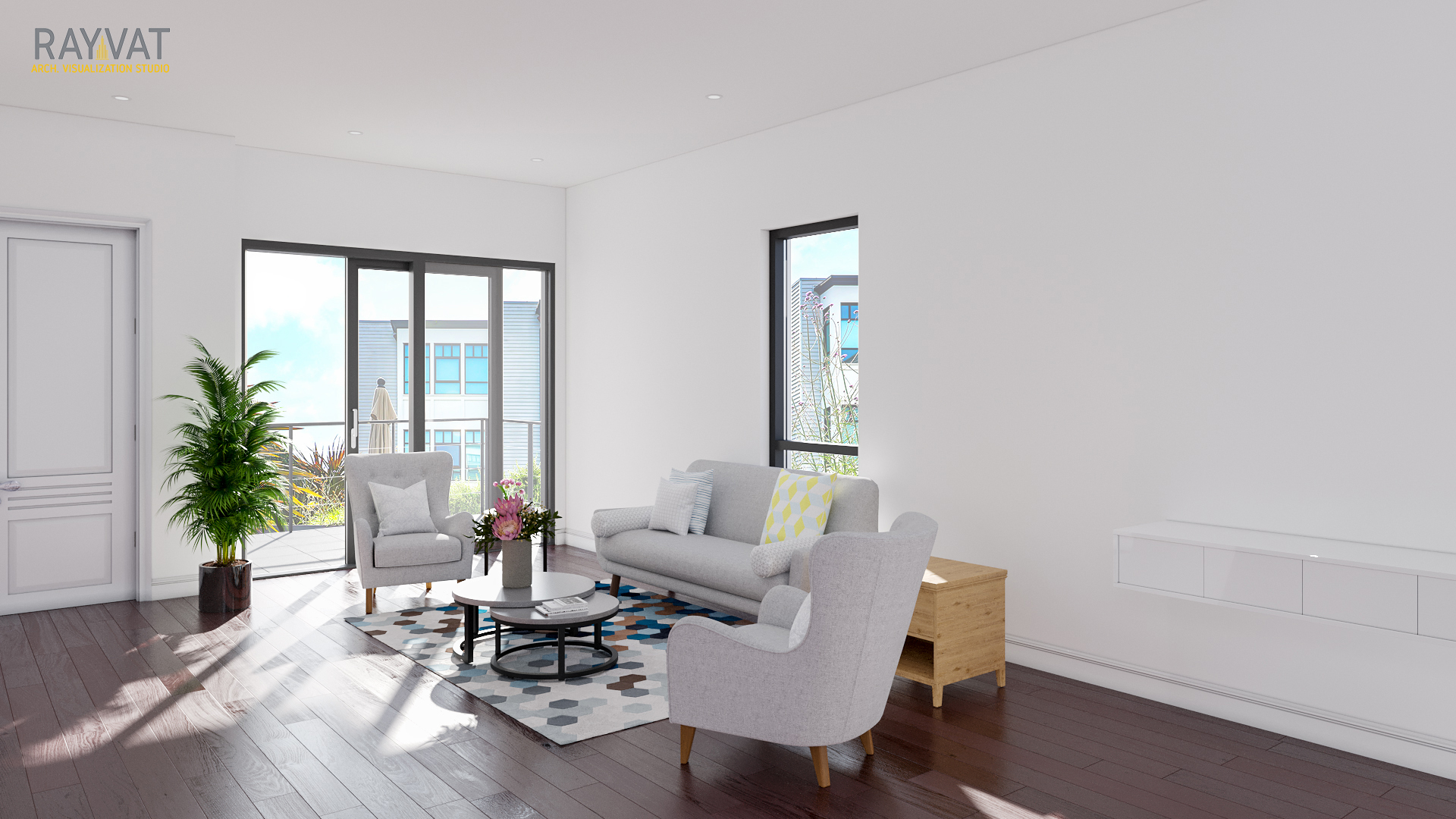
When there is a low amount of detail in a photorealistic interior rendering, the viewer’s attention is drawn to the main elements. This could be the bed and side units in a bedroom, or the main seating elements in a living room. When the focus is on the main part of the room, the interior will look spacious and feel clean.
2. Medium Amount
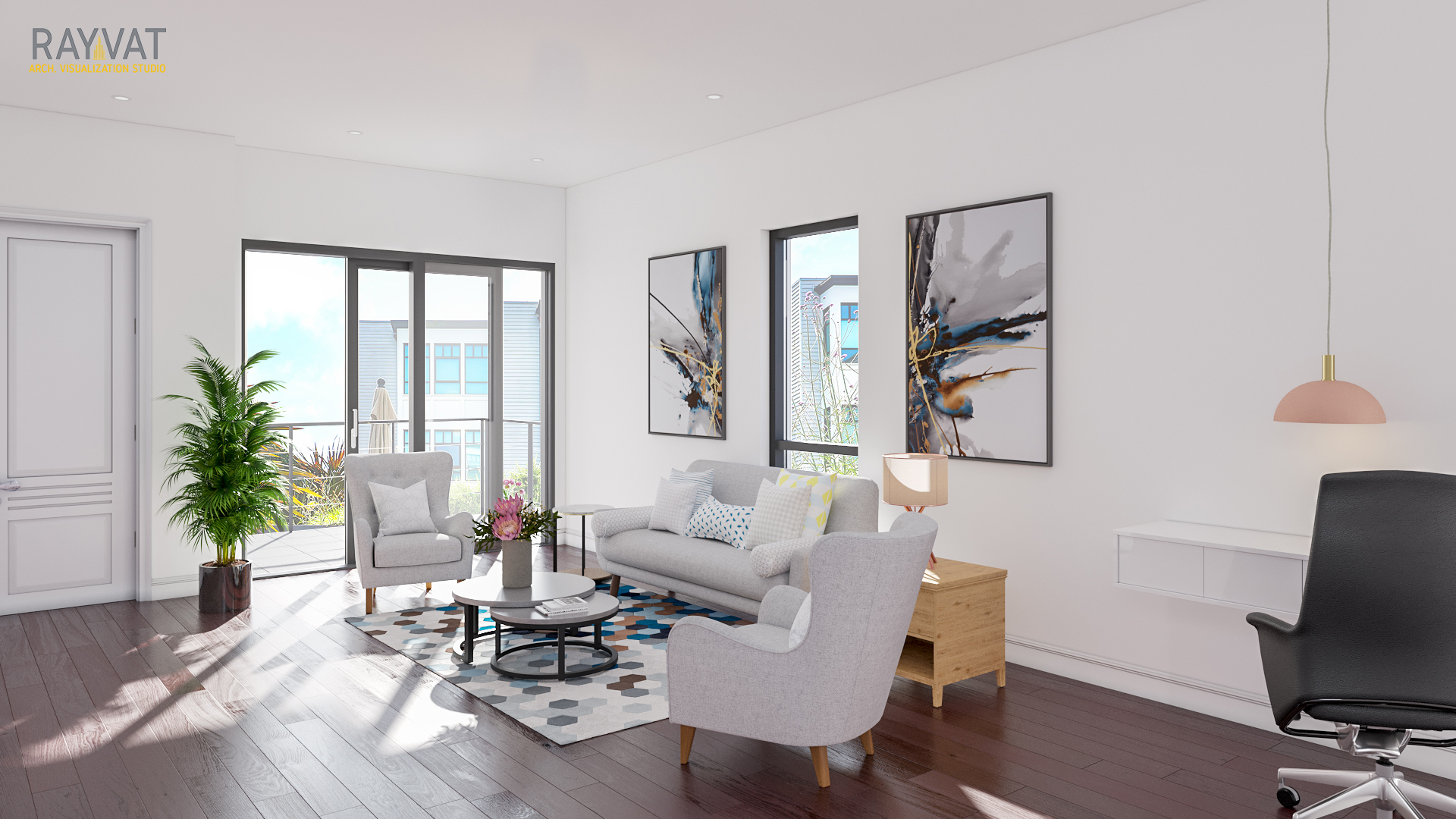
With medium amount of detail in a photorealistic 3D render, the space looks more realistic and lived in. You can also request the artist to add details like a messy blanket on the bed or some fruits on the table. It is important to ensure that the detailing and décor elements are aligned to the design with respect to colour palette and design theme.
3. High Amount
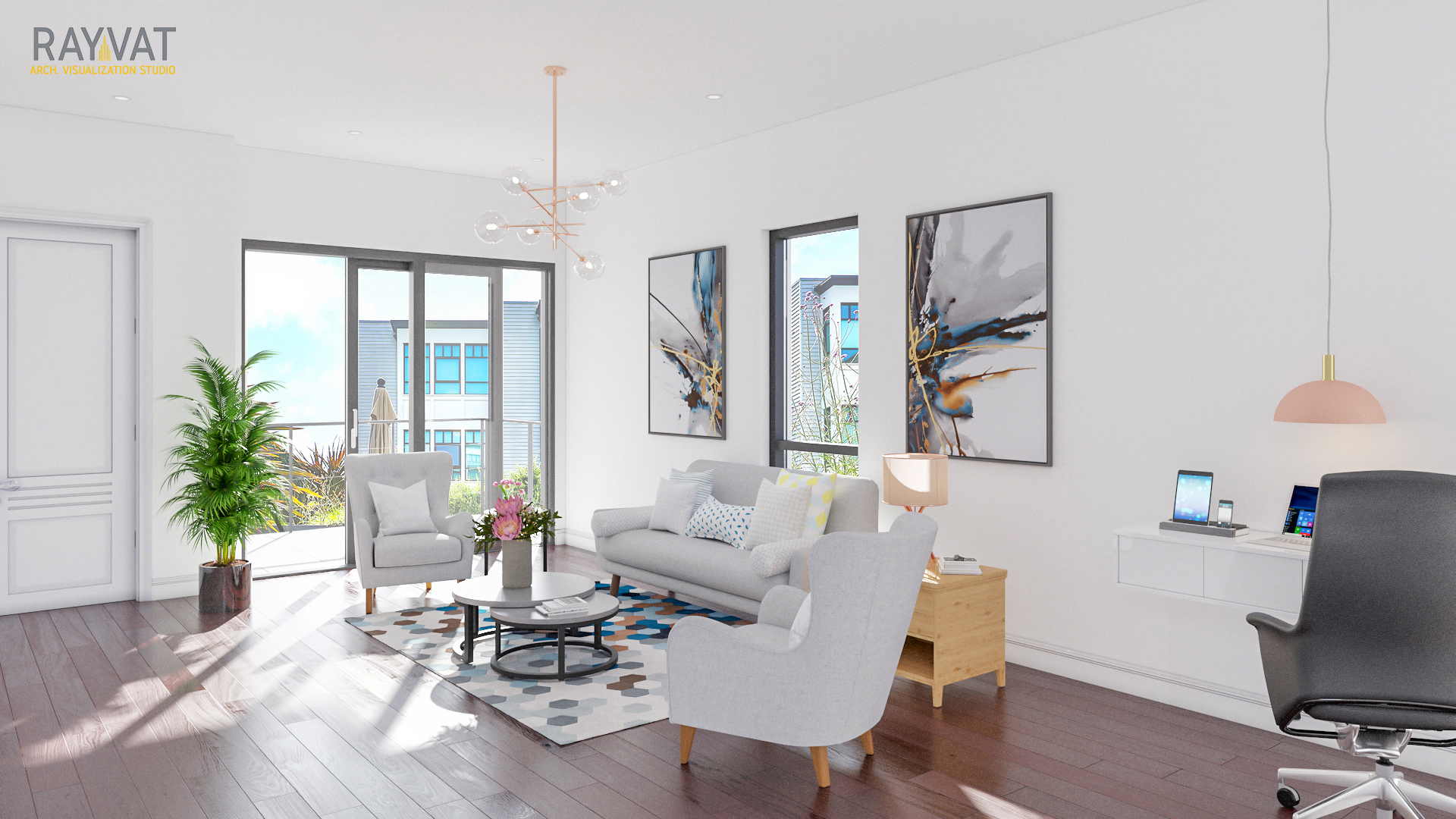
It could be distracting to add too many details to a photorealistic interior 3D rendering, and the viewer could get confused as to what the focus of the design is. It is always better to keep the number of elements low, and the focus on what is important rather than showcasing all aspects of the room in great detail. Again, when adding too much of detail to the interior space, the room could end up looking cluttered and lacking a spacious feel.
It is always advised to get an understanding of the client’s preferences before choosing the level of detail to be depicted in the 3D image. Some clients may prefer a lot of elaborate detailing, while others could like the minimalistic feel and tone.
Optimal Choices for a Final Render
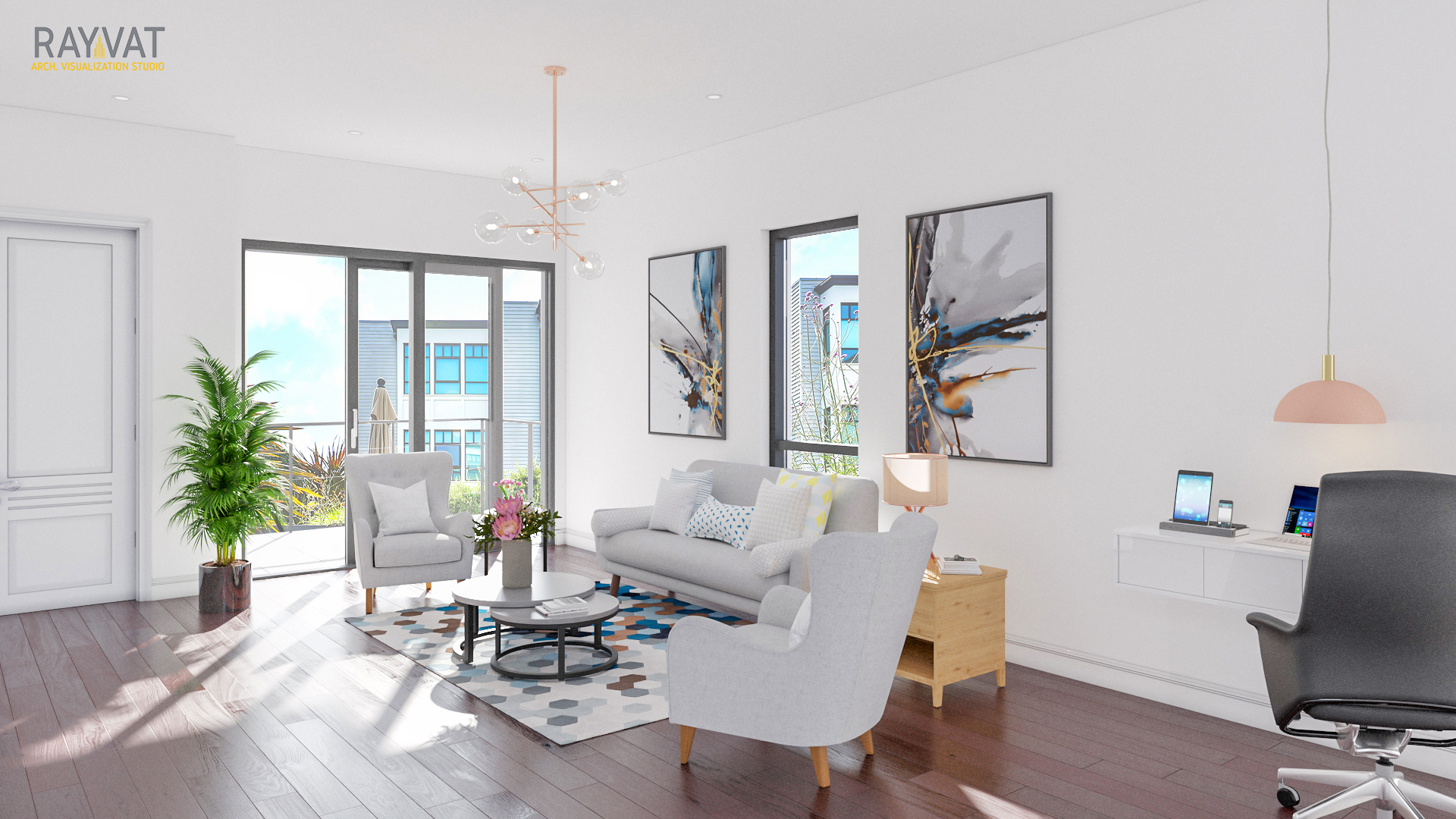
This image shows an interior that is set in the middle of the day. Sunlight streams in through the long windows to one side, and there are no overly bright or dark spots in the room. Colours are depicted in their natural setting and the mood created is sunny and vibrant. As the detail is kept to a minimum, the room feels uncluttered, fresh and spacious.
We hope you’ve got a clear understanding of the moods that can be created using the right choice of settings for your 3D interior images! The time of day, lighting and weather variants can be used to showcase your project in the best possible manner. Keep the client’s taste and design preferences in mind and convey the right emotions that will help you reach your project goals!
Are you looking for high quality professional real estate rendering services? Awe your stakeholders and nail your presentation with hyper-realistic 3D renders from Rayvat!
For enquiries, Contact us today at +1-(888)-863-4445 or email us at engineering@rayvat.com or fill up a short enquiry form here.
